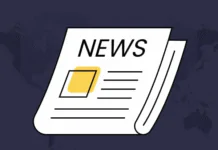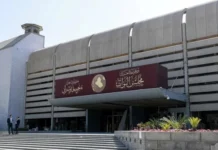Good Morning ,
US Shutdown Day 2: What’s Happening, Who’s Affected & Why It Matters
Services falter, economic losses mount, and continuity of governance looms as a central test of American institutional strength.
What Operations Continue — and What Doesn’t
• Essential services such as Social Security payments, Medicare, Medicaid, and the U.S. Postal Service (which is funded outside annual appropriations) remain operational.
• The federal courts announced they can sustain operations through October 17, 2025 under existing resources.
• Public health & research agencies face deep cuts: ~41% of Health & Human Services staff will be furloughed, and institutions like NIH and CDC are heavily affected.
• Cybersecurity functions are compromised — CISA has furloughed most of its workforce, weakening defense of critical infrastructure.
• Hospitals, particularly in rural or underserved areas, risk losing federal funding via Medicaid and other support programs.
• Air traffic and aviation impacts include the halting of new air traffic controller training, potential delays in safety inspections, and strain on travel infrastructure.
Economic Fallout & Ripple Effects
• A White House memo projects up to $15 billion in GDP lost per week during the shutdown, with potential unemployment rises.
• The CBO previously estimated that extended shutdowns suppress private-sector demand, as furloughed workers lose income and cut spending.
• Historic precedent: The 2018–19 shutdown cost the economy ~$11 billion and shaved growth.
Could Continuity of Government Be Tested?
Government continuity mechanisms are designed to maintain essential functions despite funding gaps. But the 2025 shutdown is testing those lines:
• Federal law (the Government Employee Fair Treatment Act of 2019) ensures retroactive pay for furloughed employees once funding is restored.
• But many federal contractors do not get back pay and may suffer permanent layoffs.
• The ability of agencies to suspend non-essential operations, redirect funds, or invoke emergency powers will strain interagency cooperation—and may empower the executive branch.
Tie-In With Deeper Structural Shifts
• The shutdown undermines the United States’ reputation for institutional stability. As the world watches, it bolsters arguments for alternative power centers—nations and blocs that claim they can deliver governance without such breakdowns.
• In times of uncertainty, capital and trust migrate. Investors may question dollar-based assets and U.S. debt, accelerating interest in non-USD reserves, alternative financial systems, or gold-anchored institutions.
• As agencies pause, new opportunities emerge for states, private actors, and foreign powers to fill gaps—shaping parallel systems of influence, trade, and financial alignment.
Why This Matters / Key Takeaway
On Day 2, the U.S. shutdown is no longer just a political showdown. It is a stress test of governance, credibility, and global authority. The resulting economic scars, institutional paralysis, and capital uncertainty create openings for shifts in financial order—just the kind of restructuring many talk about, but few expect to see so clearly.
This is not just politics — it’s global finance restructuring before our eyes.
@ Newshounds News™ Exclusive
Sources:
- The Guardian – What does the US government shutdown mean for everyday people The Guardian
- Modern Diplomacy (via your link)
- Reuters – Courts can sustain operations through October 17 Reuters
- Reuters – Health agency furloughs Reuters
- Washington Post – CISA and cybersecurity furloughs The Washington Post
- Axios – Hospital funding in jeopardy Axios
- Reuters – Air traffic controller training halted Reuters
- Politico – White House memo on GDP loss Politico
- CBO – Potential effects of a federal government shutdown Congressional Budget Office
- The Guardian / historic shutdown cost The Guardian+1
- Wikipedia – 2025 U.S. federal government shutdown Wikipedia
- Wikipedia – Government Employee Fair Treatment Act Wikipedia
- House.gov / impact summary tonko.house.gov
~~~~~~~~~
US Upgrades Air Power on Korean Peninsula
Strategic modernization in East Asia exposes deeper shifts in power, alliances, and global defense finances.
Modernization Amid Rising Tensions
• The U.S. is retiring aging A-10 aircraft in South Korea and upgrading F-16 jets with new avionics to improve survivability and mission precision.
• Drone operations are expanding: a drone squadron in South Korea has been established, and U.S. Air Force, Navy, and Marine drones are now deployed in Japan for intelligence and deterrence roles.
• The move occurs in tandem with rebalancing in Japan, where F-35A and F-15EX jets are being phased into Japan’s combat fleet.
Why It Matters
• The U.S. is signaling its continuing commitment to deterrence in Northeast Asia, reinforcing alliances as North Korea advances missile and nuclear capabilities.
• Upgrading capabilities in an allied theater extends U.S. logistical, strategic, and financial burden—yet it also projects influence and anchors security partnerships in a contested region.
• The modernization supports U.S. goals of maintaining forward-deployed dominance, which has downstream effects on trade routes, supply chains, and regional stability.
Global & Financial Implications in a Restructuring Era
🔹 Military Spending & Fiscal Strain
• Funding modernization is expensive. As defense budgets swell, opportunity cost appears in social programs, infrastructure, and domestic priorities.
• In the context of government shutdowns, volatile debt, and financial stress, the willingness to sustain heavy defense outlays may be tested.
🔹 Realignment of Defense Influence
• Nations in Southeast and Northeast Asia witness these upgrades as both reassurance and pressure. Some may shift procurement or alignments (Russia, China, India) in response.
• Competitors may respond: China could accelerate naval or air development in disputed areas (South China Sea, Taiwan Strait) to counterbalance U.S. presence.
🔹 Infrastructure, Bases & Local Economies
• Bases in South Korea, Japan, and allied outposts see upgrades, spurring contracts, defense manufacturing, and local economic activity tied to U.S. defense industrial complex.
• Those infrastructure investments carry long-term financial commitments and create dependencies.
Key Takeaway
U.S. upgrades in air power aren’t just about military deterrence. They are nodes in a larger architecture of global influence, financial marking, and infrastructure dependence. As the world edges toward a multipolar order, control of the skies becomes central to who controls the future.
This is not just politics — global finance restructuring before our eyes.
@ Newshounds News™ Exclusive
Source: Newsweek – US Upgrades Air Power on Korean Peninsula Newsweek
~~~~~~~~~
China Uses UN to Advance Biggest Territorial Claim
China leverages the United Nations to bolster its sovereignty narrative over Taiwan — a move with deep geopolitical and financial implications.
China’s Legal Play at the U.N.
● The Chinese government issued a white paper at the U.N. General Assembly, asserting that UN Resolution 2758 “once and for all” settled China’s representation, and implicitly extended its sovereignty claim over Taiwan.
● Beijing claims that the resolution, passed in 1971, supports the idea that Taiwan is a province of China, and that “two Chinas” or “one China, one Taiwan” are illegitimate.
● Taiwan’s government and its de facto diplomatic representatives (AIT) reject that interpretation, emphasizing that 2758 did not expressly address Taiwan’s political status.
Responses & Regional Ripple Effects
● Taiwan condemned the white paper, accusing China of deliberate distortion of treaties and documents to justify coercive claims.
● Recent reporting indicates Taiwan views China’s reinterpretation of 2758 as an attempt to manufacture a legal basis for future aggression.
● Observers note that the U.N. General Assembly’s decision did not adjudicate the status of Taiwan as a state; it resolved which government represents “China” at the U.N.
● In parallel, China continues to apply pressure via grey-zone tools — military drills, diplomatic isolation, media influence, and legal arguments — to shift the status quo.
Larger Stakes: Power, Influence & Financial Leverage
🔹 Weaponizing International Institutions
China’s use of the UN as a venue for sovereignty claims illustrates how great powers can co-opt multilateral institutions to validate expansionist agendas. This undermines the credibility of neutrality in global systems.
🔹 Erosion of Norms & Precedents
If states succeed in stretching legal interpretations to justify territorial claims, international law becomes malleable. That could embolden other powers to challenge borders under nominal legal cover.
🔹 Financial & Strategic Impacts
Countries aligned with China may begin to mirror its use of legal and institutional pressure. Capital flows, trade agreements, and investment patterns may increasingly favor states that accept such interpretations or stay silent.
🔹 Questioning U.S. Authority & Rule Enforcement
As China asserts dominance in key institutions, American leverage through institutions like the U.N. wanes. Its ability to uphold rules, impose sanctions, or shape UN bodies may diminish over time.
Why This Matters / Key Takeaway
China’s push to reframe Taiwan’s status at the U.N. is more than a legal argument — it is a structural move in the reshaping of global power. By bending institutions to its will, Beijing challenges the mechanisms through which rules, norms, and legitimacy are maintained. In doing so, it accelerates shifts in financial, diplomatic, and institutional architecture — exactly the kind of transformation that signals we are witnessing global finance restructuring.
This is not just politics — it’s global finance restructuring before our eyes.
@ Newshounds News™ Exclusive
Sources & Further Reading:
- Newsweek – China Uses UN to Advance Biggest Territorial Claim Newsweek
- Reuters – Taiwan says China trying to create legal basis for attack via misinterpretation of UN Resolution 2758 Reuters
- U.S.–Asia Law Institute – Analysis: UN General Assembly Resolution 2758 Does Not Establish Beijing’s “One China” as Fact U.S.-Asia Law Institute
- Taiwan Ministry of Foreign Affairs – Rebuttal to PRC claims on Taiwan Taiwan MOFA
- RUSI / policy papers – Taiwan’s response to China’s grey zone tactics RUSI
- Academia (arXiv) – Cross-strait information influence networks arXiv
~~~~~~~~~
Seeds of Wisdom Team RV Currency Facts Youtube and Rumble
Newshound’s News Telegram Room Link
Follow the Gold/Silver Rate COMEX
Follow Fast Facts
Seeds of Wisdom Team™ Website





